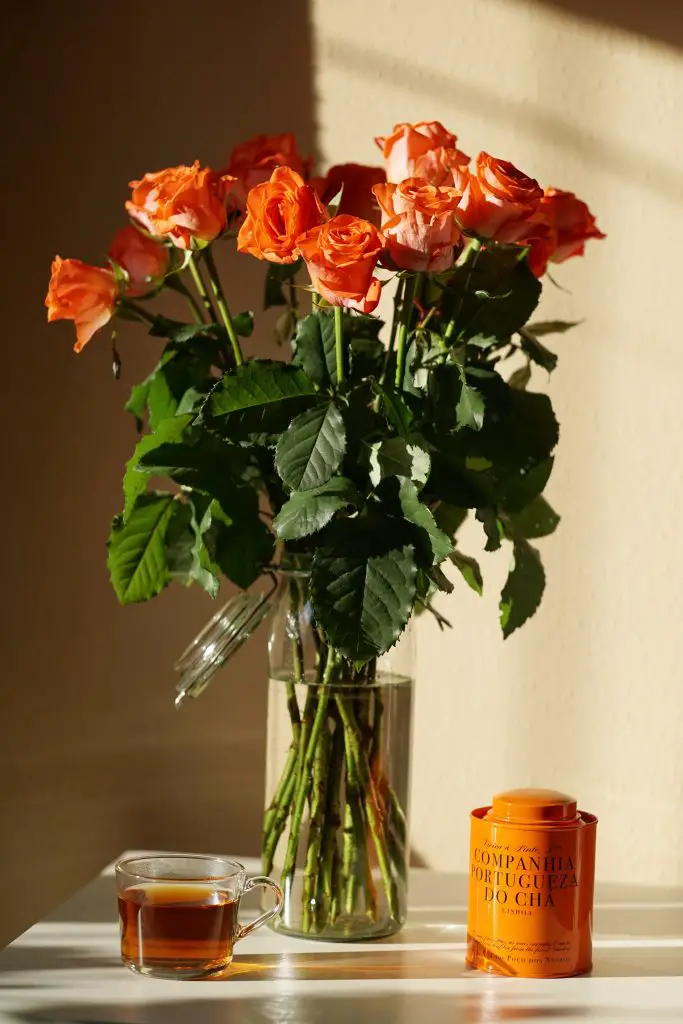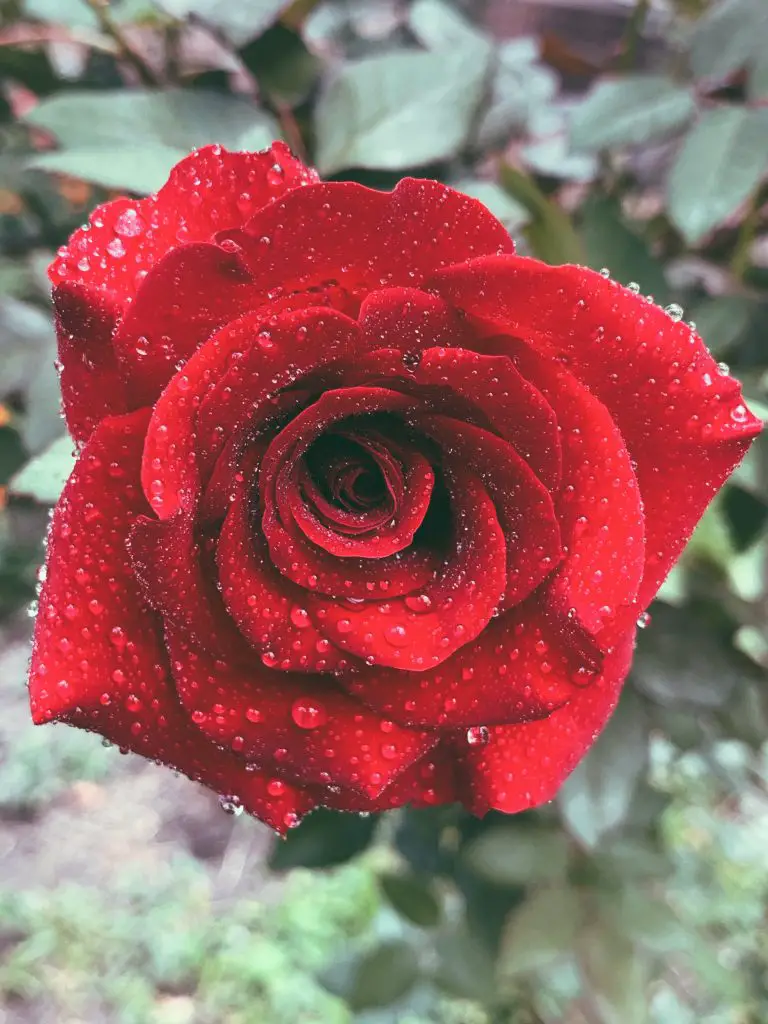Rose vs Tulip: What Is The Difference And Which One Is Better? Roses and tulips are among the most popular flowers to grow in the garden at home, however, if you are a new gardener you may be wondering what all the fuss is about, which one is better, and what the differences are. This article will provide you with all information that you need to get yourself started in growing these things and understanding what the differences are.
The primary difference between roses and tulips is that roses are produced on a thorny bush that is deciduous and dies back every year, whereas tulips are produced from bulbs that also will die back every year. However, a tulip bulb will only produce a single flower once a year whereas roses will produce many flowers over an extended period of the season. But their advantages in growing both plants.
The primary advantage of growing tulips is that they do produce flowers early in the season typically in early to mid-spring but then they will quickly fade. This is a period of the year where there is generally not a lot of color around in terms of flowers apart from spring flowering bulbs which tulips are just one of those. Many gardeners use them as a way of providing interest and color at a relatively quiet time of the year in terms of flowering plants.
Roses on the other hand flower later in the season and usually take until late spring or even summer to begin to produce a significant number of blooms. However, they will produce many blooms from a single plant which can be used as cut flowers inside your house. This process not only beautifies your house but also helps to extend the flowering season of the roses significantly.
Additionally, the flowers that are produced are highly fragrant which makes them even more attractive to bring into your home whereas tulips do not have any scent at all.

All About Tulips
As mentioned above tulips are produced by planting a bulb in the garden. They have the advantage over roses are they generally require very little maintenance to grow year-on-year and essentially can be left to their own devices provided that you have a suitable climate in which they can grow.
The climates that tulips will grow in by themselves without need for intervention must have sufficiently cold winters. This is a requirement for the simple reason that tulip bulbs require a period of cold in order to flower successfully.
As a result of this tulips generally are most suited to growing in Zone 9 or lower as the winters are sufficiently cold for growing requirements. However, if you live in a warmer climate you can still successfully grow tulips but there is additional work required.
This additional work requires you to remove the bulbs from the ground each year after the plants have flowered and place them into a fridge for six weeks or so before returning them back to the garden. This process should be typically done in autumn.
The other very important aspect associated with ensuring that you get flowers from the bulbs every single year is to ensure that the flower head is removed once flowering is completed. This prevents the plant from producing seed and allows the bulb to focus on refueling for the following year.
However, for this to happen successfully the remainder of the foliage must be allowed to die back naturally. This is important part of a tulip’s life cycle because the foliage will continue to photosynthesize and return sugars to the bulb for a month or two before becoming dormant in the summer.

As tulips are spring flowering bulbs most people plant them into the ground in autumn, however, they can go into the ground as late as the start of winter and still flower quite successfully. The bulb should be planted at a depth of approximately 3 to 4 inches.
The location of bulbs should ideally be in a sunny location that has moist free draining soil that is unlikely to become boggy during the worst of the winter weather. This can be problematic for bulbs because they have the potential to rot if they sit in water for too long.
It is also advisable that the bulbs be dug up every couple of years and divided as they will progressively produce an increasing number of bulbs which can become overcrowded in the ground, Overcrowding will begin to have a negative effect on the quality and quantity of the flowers that are produced.
All About Roses
There is a wide range of rose plants available for the garden and they come in a range of colors. These plants can generally be divided into bush roses and climbing roses of which there are many subcategories that we will not go into in detail in this article.
Bush roses will typically reach a height of around 6 ft depending upon how the plants are pruned and they will have many thorns though there are some thornless varieties available. The disadvantage of thornless roses is that many of the flowers lack scent.
The plant themselves are deciduous and will produce flushes of growth in spring followed by flower buds and a large number of flowers during summer. These plants require significantly more maintenance than bulbs because they do require pruning and feeding throughout the year.
The main prune of the year which is most significant to the structure of the rose is usually the winter prune. The winter prune is typically carried out at the end of winter just before the plant is beginning to reshoot. As the plant has no foliage on it at this stage it is the best time of the year to get in and remove any unwanted growth and also reduce the size of the rose.
During this prune most gardeners will remove at least 1/3 of the plant’s growth often more. When pruning roses at this time of year it is best to start by removing any dead or diseased canes and also those which are overlapping with each other.

The centre of the rose should be cleared out by removing any inward-facing canes to create an open structure that will reduce the chances of disease. Additionally, any spindly growth that is less than a pencil thick should also be removed leaving only the strongest and most mature canes to carry the flowers for this year.
Once the winter prune is done it is also a good idea to feed the plant with pelletized manure or specific rose fertilizer. The plant can then be left to its own devices throughout the spring period in which you will see it produce large volumes of growth and buds for flowering. During this period is a good idea to ensure that the plant is watered regularly and has plenty of moisture to support this growth.
Once the plants have reached this stage and are beginning to flower it is important to bring in any flowers as they appear and deadhead any spent flower heads to encourage the plant to continue to produce flowers on an ongoing basis. If you do this you should have flowers throughout the summer. into autumn.
Conclusion
Both tulips and roses have their place in any garden, however, if you have to choose one I would go for roses purely for the length of the time that they flower. However, tulip bulbs can be happily grown in the same space as roses providing an extended flowering display throughout the year. As such I would not recommend that you pick one of the other but rather grow both as each plant will contribute to producing a beautiful garden throughout the year.
I hope you found this article useful and have great success growing roses and tulips at home if you have any additional comments or questions please leave them in the section below
Relevant Articles
Is Crocosmia Deer Resistant? What Can You Do To Protect The Plants?
Catnip Vs Mint: What Is The Difference?
Do Canna Lilies Spread? Are They Invasive?
Do Irises Spread? Are They Invasive?
